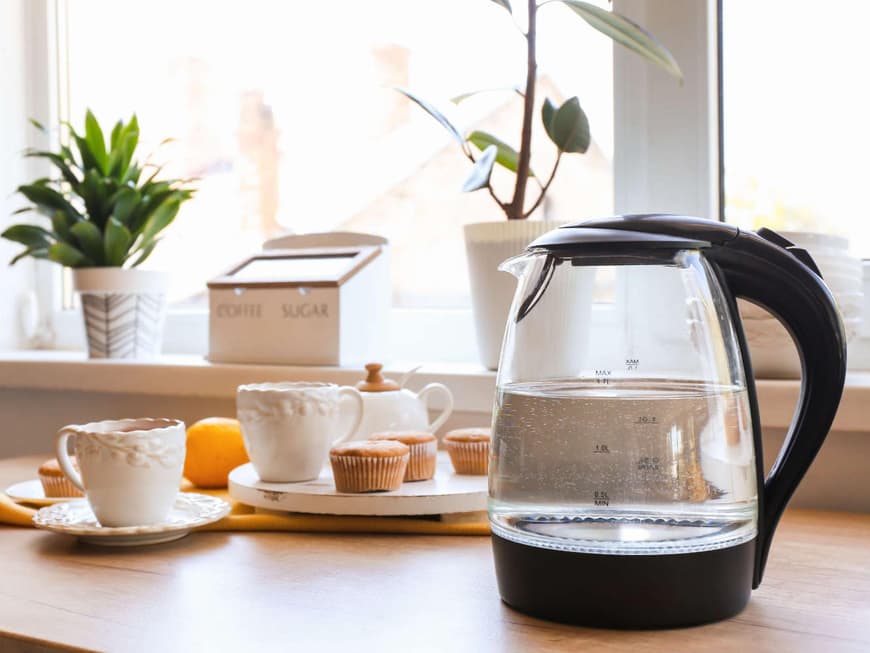
Limescale deposits are a completely natural process for appliances that come into contact with hot water. But don't worry, you can get them sparkling clean again with household remedies!
Descaling kettles with vinegar
Thanks to its acidity, vinegar is a tried and tested household remedy for removing limescale. This is why vinegar essence should never be used directly, but must always be diluted with water! To descale the kettle, fill the kettle halfway with water and add 2 to 4 tablespoons of vinegar. Bring the vinegar water to the boil and leave to soak for around half an hour. Pour away and then rinse the kettle with clean water.
Removing limescale stains: the best way to do it
Descaling the kettle with lemon
Lemon serves the same purpose as vinegar - it also dissolves limescale deposits due to its acidity. Fill the kettle up to the maximum level with water and add a packet of citric acid or lemon juice (approx. 3 to 5 tablespoons). You do not need to boil the mixture, simply leave it to stand for a few hours until the limescale has dissolved. Then rinse with clean water.
Descaling kettles with baking soda
Baking soda is also a jack-of-all-trades in the kitchen. Depending on the volume of the kettle, fill it about a third full with water and add a sachet of baking soda. Caution: the water will bubble strongly! Then switch on the kettle, bring the mixture to the boil and leave to stand for about an hour, drain and rinse thoroughly with clean water.
Clean the baking tray: This is how it works
